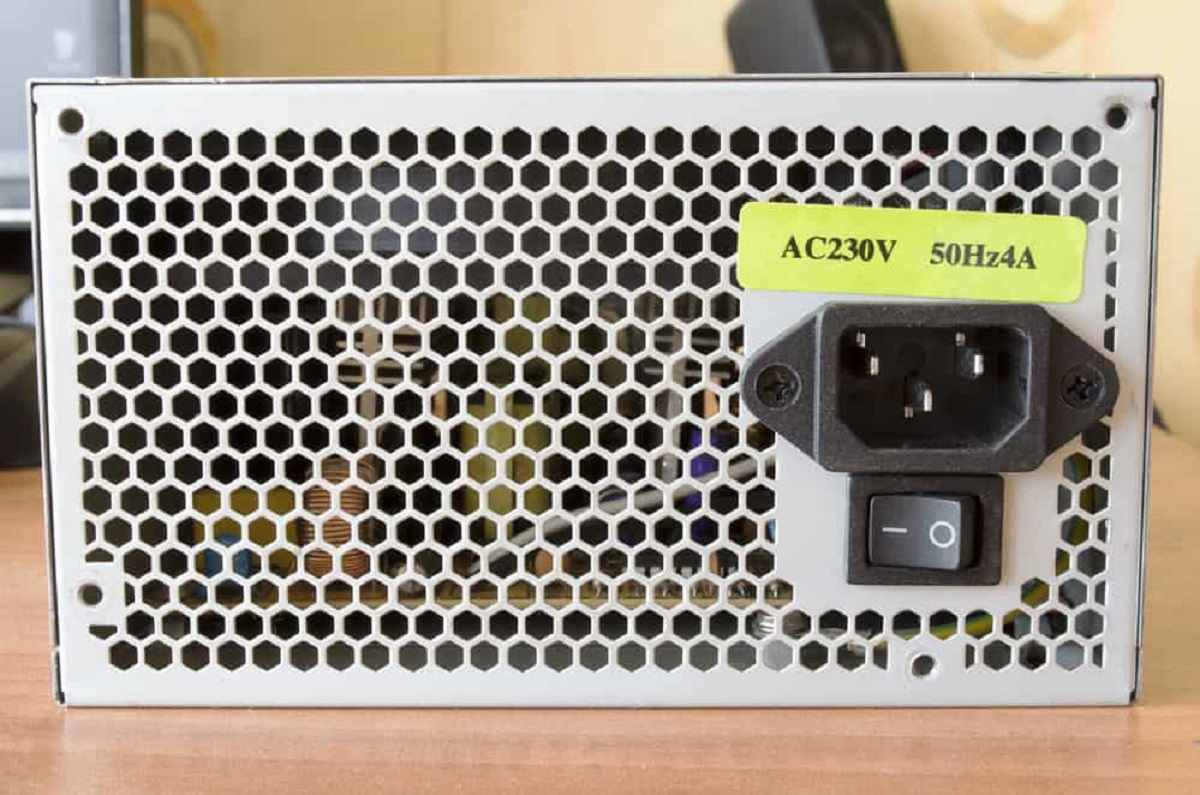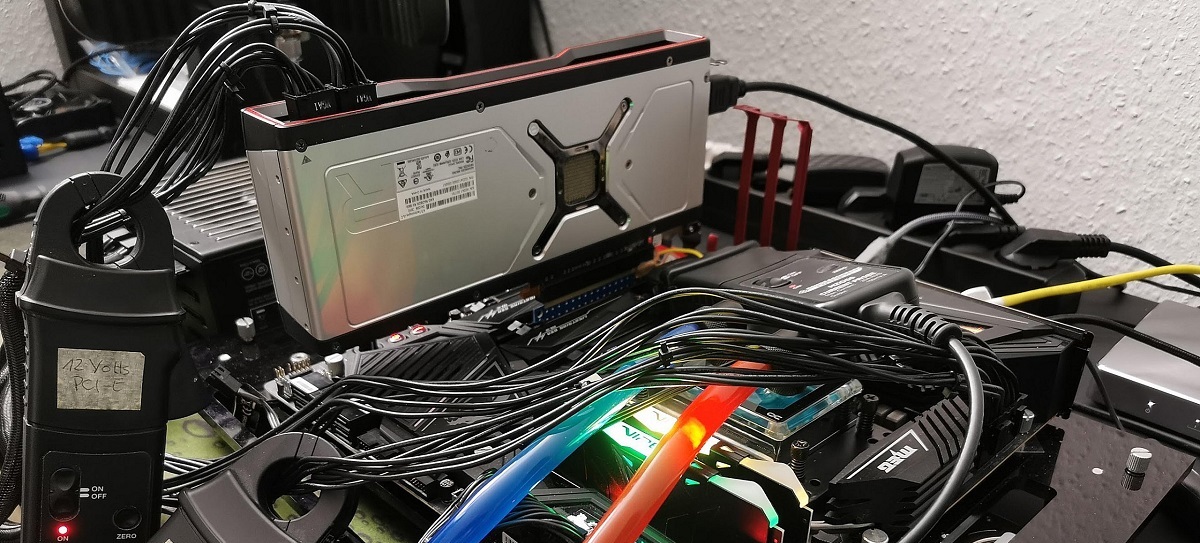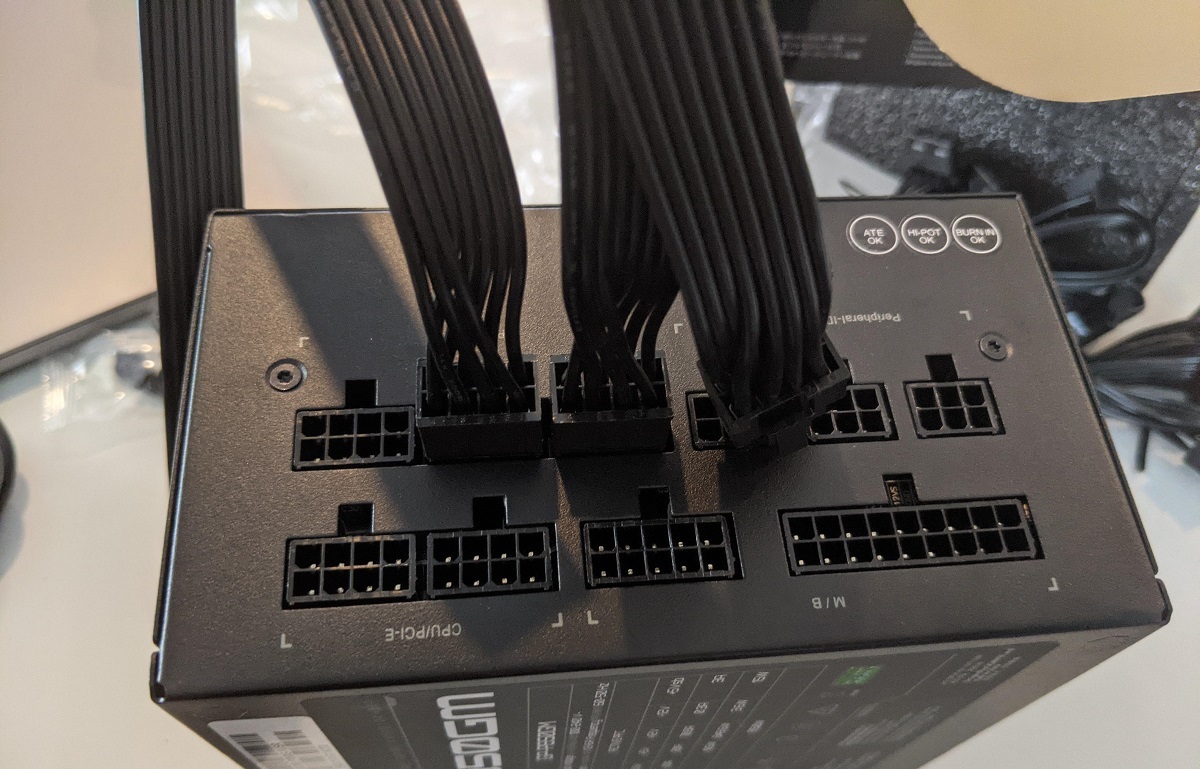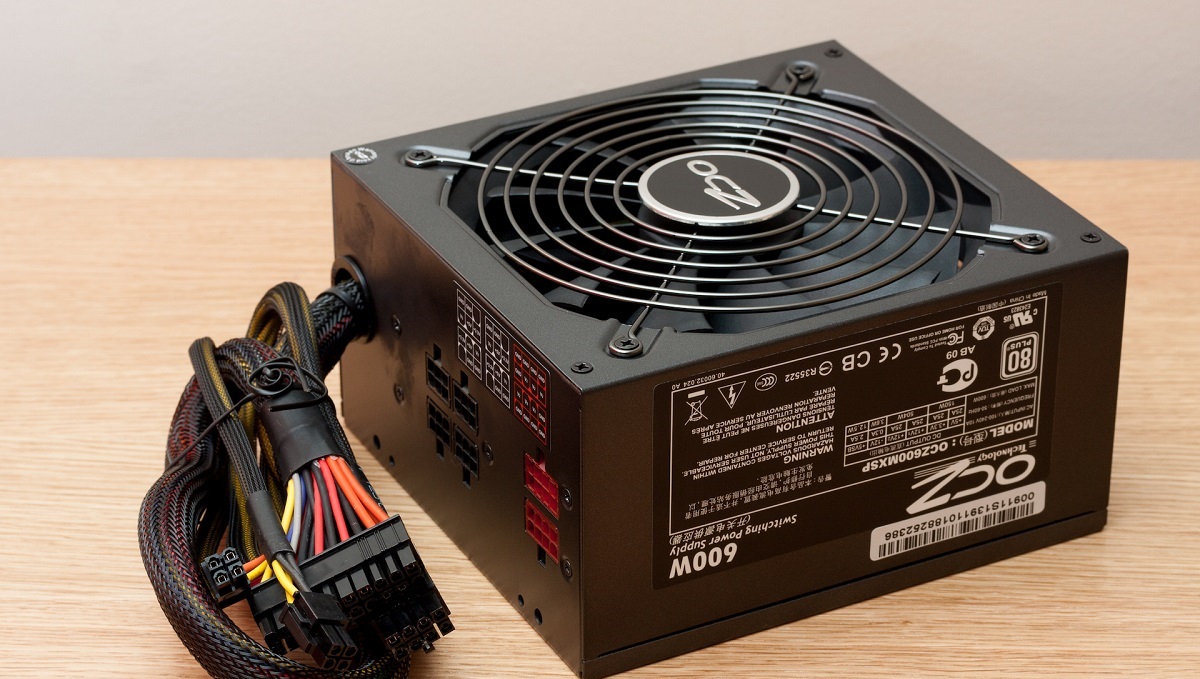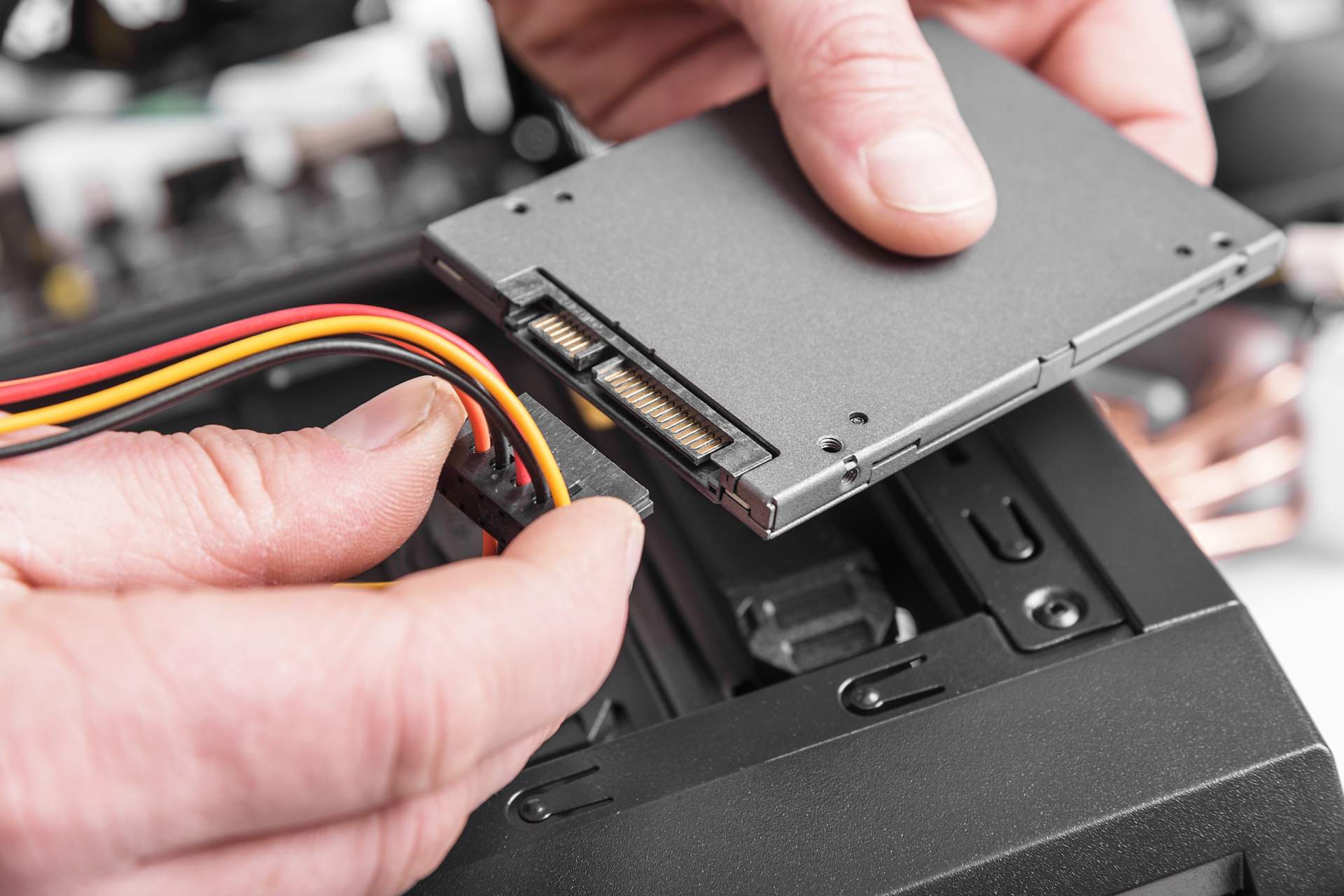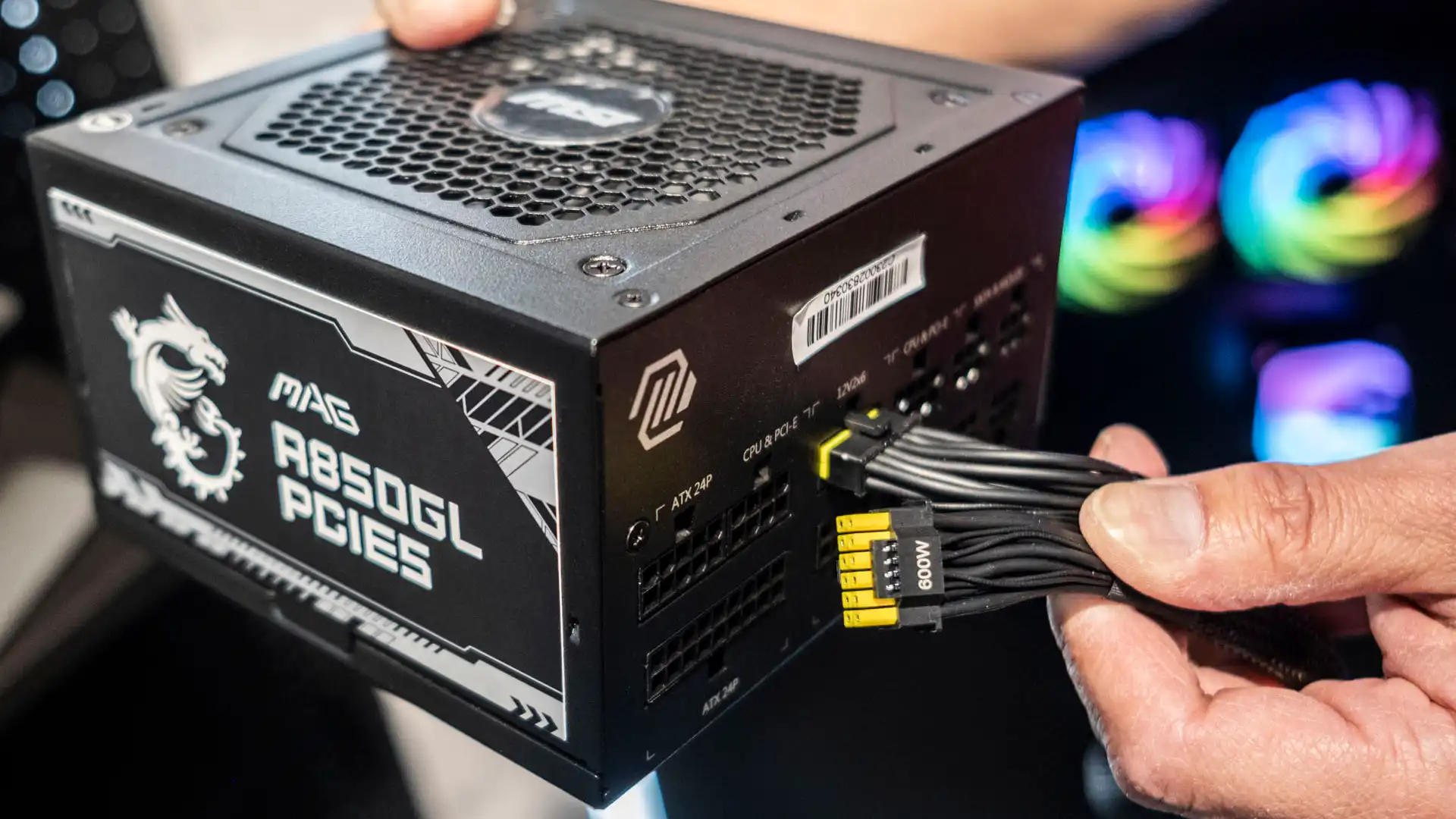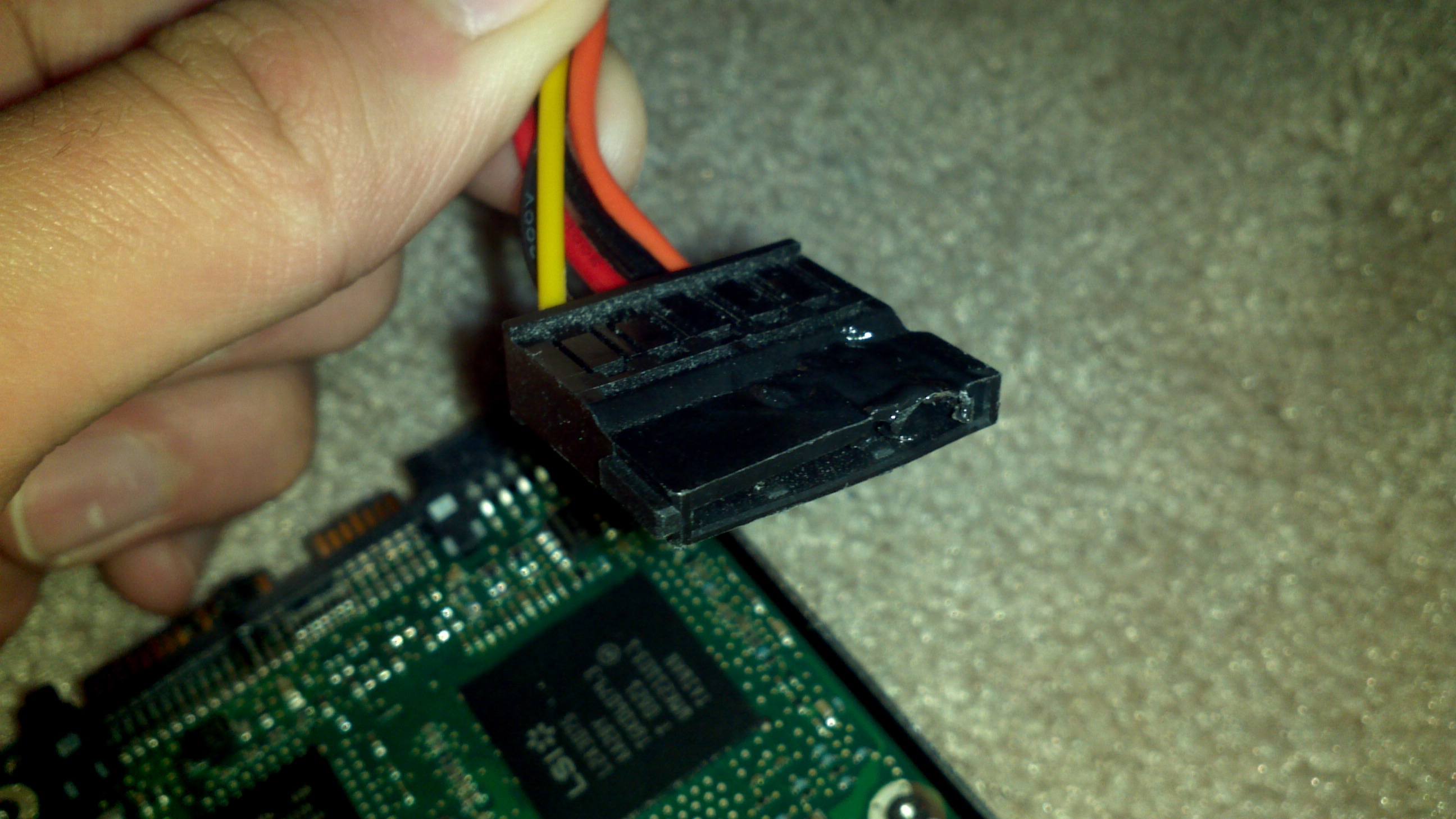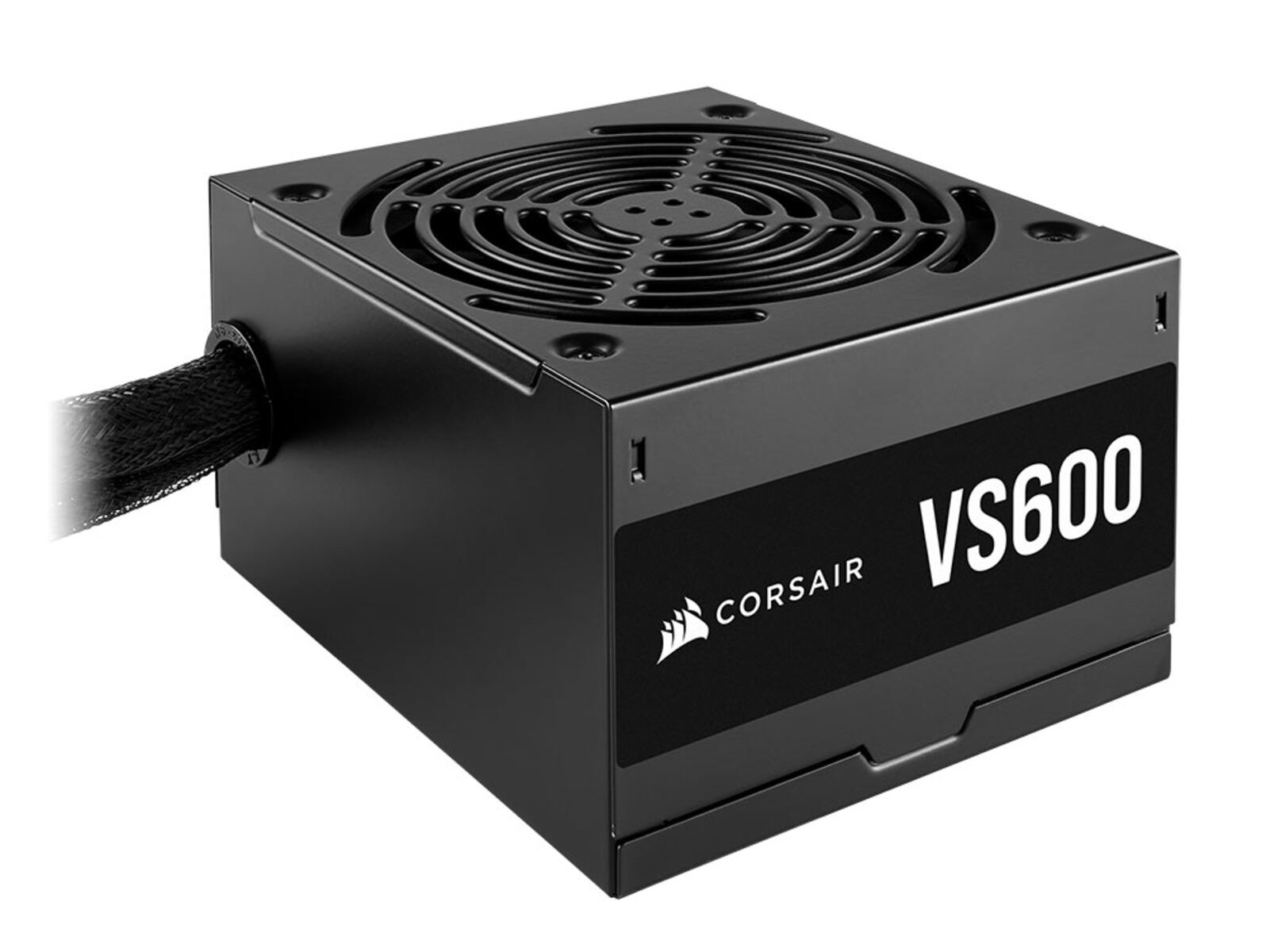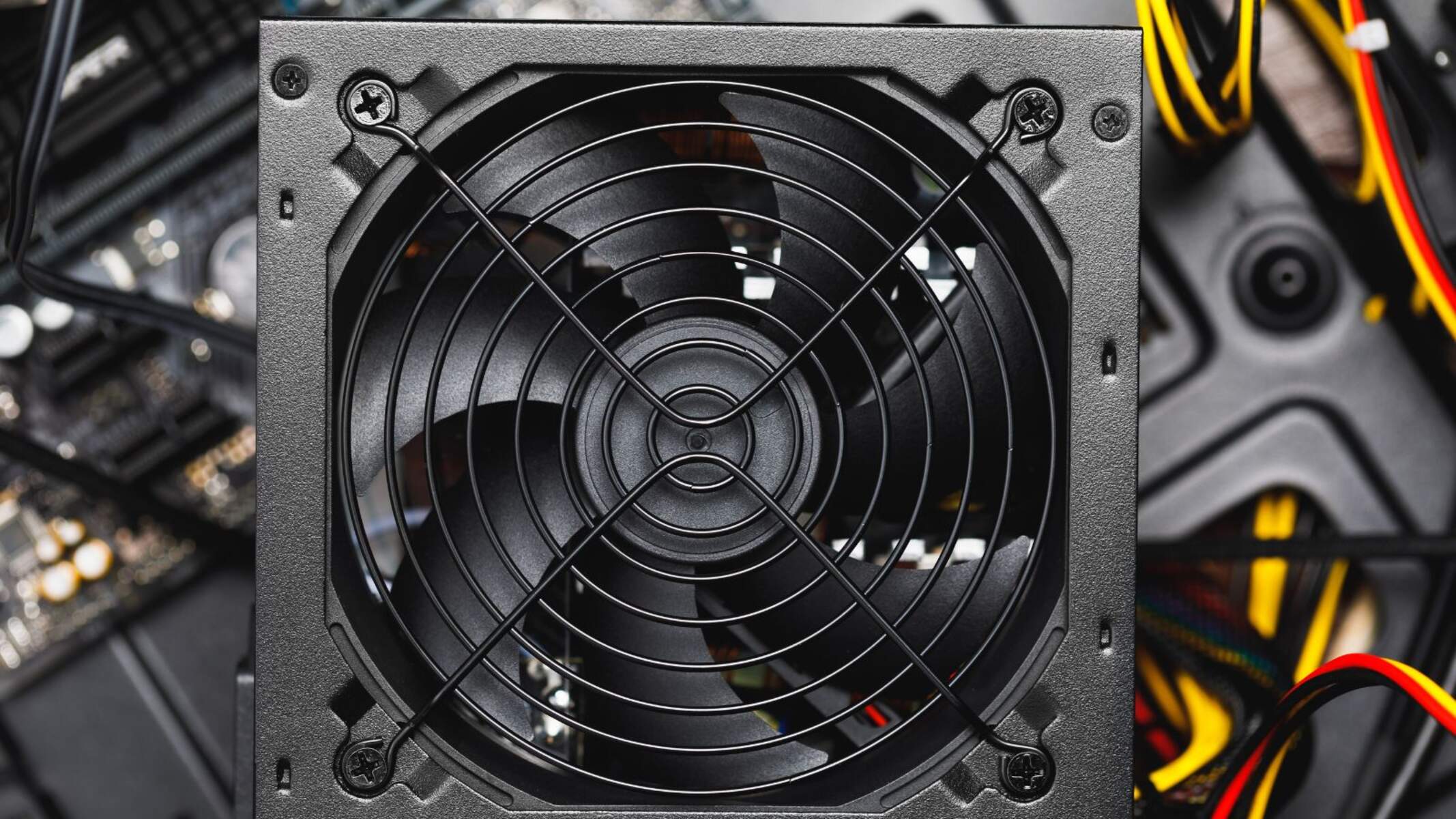Introduction
Welcome to the world of power supply units (PSUs) and the potential consequences of using an underpowered one. Whether you’re a seasoned computer enthusiast or a casual user, it’s essential to understand the role of a PSU and why having the right wattage is crucial for your system’s performance and longevity.
The power supply unit is a vital component of any computer system, responsible for converting the AC power from your wall outlet into DC power that your computer can use. It supplies power to every hardware component, including the processor, graphics card, hard drives, and other peripherals. Without a properly functioning PSU, your computer simply won’t turn on or operate efficiently.
While many users are aware of the importance of a quality PSU, the relevance of wattage is often underestimated or overlooked. The wattage rating of a PSU determines the amount of power it can deliver to your system. Insufficient wattage can lead to a range of issues, affecting overall performance and potentially causing damage to your components.
In this article, we will explore the consequences of using an underpowered PSU, the symptoms to watch out for, and the potential solutions to ensure your system is operating optimally. By the end, you’ll have a clear understanding of why it’s crucial to have the right PSU wattage for your computer system.
What is a PSU and its function?
A power supply unit (PSU) is a critical component of a computer system that converts the alternating current (AC) power from your wall outlet into direct current (DC) power that your computer can use. It is responsible for providing a stable and consistent power supply to all the hardware components of your system.
The primary function of a PSU is to deliver power to the various components of your computer, such as the processor, graphics card, motherboard, hard drives, and peripherals. It ensures that these components receive the appropriate voltage and current to function optimally.
The PSU consists of several key components, including transformers, capacitors, rectifiers, and voltage regulation circuits. These components work together to regulate the voltage and ensure a steady flow of power to your system.
One of the essential features of a PSU is its wattage rating. The wattage rating indicates the maximum amount of power that the PSU can supply to your system. It is crucial to choose a PSU with the appropriate wattage for your specific needs. Using an underpowered PSU can result in performance issues and may even lead to component damage.
Aside from providing power, PSUs also play a role in maintaining system stability. They incorporate various safeguards, such as over-voltage protection, under-voltage protection, and short circuit protection, to prevent damage to your components in the event of power irregularities or malfunctions.
In summary, a PSU is responsible for converting AC power from the wall outlet into DC power that your computer can use. It supplies power to all the hardware components of your system, ensuring that they receive the appropriate voltage and current. Choosing the right wattage PSU is essential to ensure optimal system performance and prevent potential damage to your components.
The importance of having the right PSU wattage
Having the right wattage PSU is crucial for the proper functioning and performance of your computer system. Underestimating or neglecting the importance of PSU wattage can have detrimental effects on your system’s stability, efficiency, and longevity. Here are some reasons why having the right PSU wattage is so important.
1. System stability: The power demands of modern computer systems can vary significantly, especially when under heavy load or running resource-intensive applications. If your PSU cannot supply enough power to meet these demands, your system may experience instability, frequent crashes, or sudden shutdowns. Having the appropriate wattage PSU ensures that your system receives a stable and reliable power supply, minimizing the risk of system instability.
2. Component performance: Insufficient power supply can negatively impact the performance of your hardware components. The processor, graphics card, and other high-performance devices require a sufficient power supply to operate at their full potential. An underpowered PSU may limit the performance of these components, resulting in decreased overall system performance, slower processing speeds, and reduced graphical capabilities.
3. Overclocking capabilities: Overclocking, which involves increasing the operating frequencies of your components to achieve higher performance, requires additional power. If your PSU cannot deliver enough power to support overclocking, you may not be able to fully utilize the potential of your hardware or experience stability issues during overclocked operation. Choosing a PSU with adequate wattage allows for better overclocking headroom and enhances your system’s performance capabilities.
4. Future upgradability: Investing in a PSU with higher wattage than your current system requirements can provide you with flexibility for future upgrades. As technology advances and the power demands of hardware components increase, having a higher wattage PSU ensures that you won’t need to replace it when upgrading your system. It saves you from additional expenses and ensures a smooth transition to more power-hungry components.
In summary, having the right PSU wattage is essential for system stability, maximum component performance, overclocking capabilities, and future upgradability. It ensures that your system receives a stable and reliable power supply, allowing your hardware to operate optimally. Investing in a PSU with adequate wattage is a crucial step towards building a high-performance and reliable computer system.
Symptoms of an underpowered PSU
Using an underpowered PSU can lead to a range of symptoms and issues that can greatly affect the performance and stability of your computer system. It’s essential to be aware of these symptoms so that you can identify and address any potential power supply issues. Here are some common symptoms of an underpowered PSU:
1. Frequent system crashes: If your computer frequently crashes or suddenly shuts down, it could be due to an insufficient power supply. When the components in your system do not receive enough power, they may malfunction or fail, causing your system to crash.
2. Random reboots: An underpowered PSU may cause your system to randomly reboot without any warning. This can occur when the power supply struggles to maintain a stable power output, leading to temporary power loss and system reboots.
3. Slow or sluggish performance: Insufficient power supply can result in decreased performance and slower operation of your hardware components. Your processor, graphics card, and other devices may not receive enough power to operate at their optimal speed, leading to overall system slowdown.
4. Unresponsive peripherals: An underpowered PSU may not be able to provide enough power to peripherals such as USB devices, external hard drives, or graphics tablets. This can cause these devices to become unresponsive or function erratically.
5. Overheating: When a PSU is underpowered, it may be unable to effectively cool down your system. This can lead to increased heat buildup within the case, resulting in higher component temperatures. Overheating can cause system instability, performance issues, and potential damage to your hardware.
6. Inability to upgrade: If your system has limitations when it comes to adding new components or upgrades, it could be a sign of an underpowered PSU. Insufficient wattage may prevent you from adding more power-hungry devices to your system without encountering stability or performance issues.
In summary, experiencing frequent crashes, random reboots, slow performance, unresponsive peripherals, overheating, and limitations on system upgrades may indicate that your PSU is underpowered. It’s important to address these symptoms as soon as possible to prevent component damage and ensure the stability and optimal performance of your computer system.
Performance issues caused by an underpowered PSU
Using an underpowered power supply unit (PSU) can have a significant impact on the overall performance of your computer system. Insufficient power can lead to various performance issues that can hinder your system’s speed, efficiency, and responsiveness. Here are some common performance issues caused by an underpowered PSU:
1. Reduced processing power: The central processing unit (CPU) is one of the most power-hungry components in a computer system. An underpowered PSU may not be able to provide the required power to the CPU, resulting in reduced processing power. This can lead to slower execution of tasks, longer loading times, and lower overall system performance.
2. Graphic lag and diminished visual quality: Graphics cards are often the most power-demanding components in a computer, especially for gaming or graphic-intensive applications. If your PSU cannot supply enough power to the graphics card, it can result in graphic lag, stuttering, or decreased visual quality. You may experience lower frame rates, pixelated graphics, or even complete display failure.
3. Poor multitasking capabilities: Insufficient power can limit your system’s ability to handle multiple tasks simultaneously. You may notice increased latency when switching between applications, slower response times, or system freezes. An underpowered PSU can hinder your computer’s multitasking abilities and overall productivity.
4. Inadequate drive performance: Hard drives and solid-state drives (SSDs) require a stable power supply to operate optimally. An underpowered PSU can result in decreased read and write speeds, longer access times, and potential data loss or corruption. Your storage devices may not function as efficiently or reliably as they should.
5. Unstable overclocking: Overclocking your CPU or graphics card can provide a performance boost, but it also requires additional power. If your PSU is underpowered, attempting to overclock your components may result in system instability or crashes. Overclocking may be limited or even impossible without the proper power supply.
6. USB device limitations: USB devices such as external hard drives, cameras, or peripherals rely on the power supplied by your PSU. An underpowered PSU may not be able to provide enough power to these devices, leading to connection issues, slow transfer speeds, or even device malfunctions.
In summary, an underpowered PSU can cause reduced processing power, graphic lag, poor multitasking capabilities, inadequate drive performance, unstable overclocking, and limitations with USB devices. Upgrading to a PSU with sufficient power capacity can help resolve these performance issues, ensuring that your system runs smoothly and efficiently. It’s important to choose a PSU that can meet the power demands of your components to maximize overall system performance.
The risk of component damage
Using an underpowered power supply unit (PSU) can pose a significant risk of damage to your computer’s components. Insufficient power supply can cause various issues that can lead to permanent damage and reduce the lifespan of your hardware. It’s important to understand the potential risks and take appropriate measures to avoid component damage. Here are some risks associated with using an underpowered PSU:
1. Overloading and overheating: When a PSU is underpowered, it may struggle to deliver the required power to your components. This can lead to overloading the PSU, causing excessive heat buildup. Overheating can damage sensitive electronic components, such as the CPU, GPU, or motherboard. Prolonged exposure to high temperatures can lead to system instability, reduced performance, and even component failure.
2. Voltage fluctuations: An underpowered PSU may not be able to regulate voltage levels effectively. This can result in voltage fluctuations, where the voltage supplied to your components fluctuates outside the safe operating range. Voltage spikes or drops can cause permanent damage to delicate electronic circuitry, leading to component failure or data corruption.
3. Stress on power-hungry components: Components such as the CPU and graphics card require a sufficient power supply to operate at their full potential. When these power-hungry components do not receive enough power, they may draw excessive current from the PSU, straining its capacity. This can lead to increased stress on both the PSU and the components themselves, potentially causing damage over time.
4. Data loss or corruption: Inadequate power supply can result in sudden shutdowns or system crashes. These abrupt power outages can lead to data loss or corruption, particularly if files are being read from or written to storage devices when the power interruption occurs. Unsaved work, damaged files, or an unstable operating system can be the result of an underpowered PSU.
5. Diminished lifespan of components: When components are consistently underpowered, they may have to work harder to perform their tasks. This increased workload can cause wear and tear, reducing the overall lifespan of the components. Shorter lifespans may result in the need for premature component replacements, increasing costs in the long run.
In summary, using an underpowered PSU puts your computer’s components at risk of damage. Overloading and overheating, voltage fluctuations, stress on power-hungry components, data loss or corruption, and a diminished lifespan of components are some of the potential risks. Investing in a properly sized PSU that meets the power requirements of your system can help safeguard your components and ensure their longevity and reliable operation.
Tips for selecting the proper PSU wattage
Choosing the right power supply unit (PSU) wattage for your computer system is crucial for optimal performance and stability. Here are some tips to help you select the proper PSU wattage for your specific needs:
1. Identify your system’s power requirements: Start by assessing the power requirements of your hardware components. Consider the wattage requirements of your CPU, graphics card, and other high-power devices. Check the manufacturer’s specifications or consult online resources to determine the recommended power consumption for each component.
2. Factor in future upgrades: Consider any planned or potential future upgrades to your system. If you’re planning to add more power-hungry components or make significant changes to your current setup, ensure that the PSU has enough headroom to accommodate these upgrades. It’s better to invest in a slightly higher wattage PSU now than having to replace it later.
3. Consider efficiency ratings: When selecting a PSU, pay attention to its efficiency ratings, typically indicated by the 80 Plus certification. Higher efficiency PSUs not only save energy but also generate less heat, resulting in better overall system performance. Look for PSUs with certifications like 80 Plus Bronze, Silver, Gold, or Platinum, as they offer higher efficiency levels.
4. Take into account system utilization: Consider how you typically use your computer system. If you are mostly engaged in resource-intensive tasks like gaming, video editing, or running multiple virtual machines, a higher wattage PSU may be necessary to meet the increased power demands during peak usage.
5. Allow for power supply degradation: Over time, the performance of a PSU may degrade. To compensate for this degradation and ensure a stable power supply, it is generally recommended to select a PSU with a wattage that exceeds the estimated power consumption of your components by around 10-20%.
6. Consider modular or semi-modular PSUs: Modular and semi-modular PSUs allow you to customize the cable connections, reducing cable clutter and improving airflow within your system. This can enhance cooling and overall system performance.
7. Read reviews and seek professional advice: Before making a final decision, read reviews and seek advice from reputable sources or professionals. This can help you gain insights into the reliability, performance, and compatibility of different PSU models.
In summary, considering your system’s power requirements, factoring in future upgrades, paying attention to efficiency ratings, accounting for system utilization, allowing for power supply degradation, considering modular options, and seeking advice can help you select the proper PSU wattage. By choosing the right PSU, you can ensure stable and efficient power delivery to your components, enhancing the overall performance and longevity of your computer system.
How to check if your PSU is underpowered
Determining whether your power supply unit (PSU) is underpowered requires assessing the performance and stability of your computer system. Here are some steps to help you check if your PSU is providing sufficient power to your components:
1. Observe system crashes and shutdowns: If your computer frequently crashes or shuts down unexpectedly, it could indicate an underpowered PSU. Note the frequency and circumstances of these occurrences to determine if there is a pattern.
2. Monitor system performance: Keep an eye on the overall performance of your system. If you notice sluggishness, delays, or reduced performance, an underpowered PSU may be the cause. Monitor the CPU and GPU usage, as well as clock speeds, to see if they are running at their expected levels.
3. Check for graphical issues: Inadequate power supply can manifest as graphical problems, including artifacts, screen flickering, or distorted displays. If you experience these issues during graphic-intensive tasks like gaming or video rendering, it’s worth investigating the possibility of an underpowered PSU.
4. Assess power-hungry component behavior: Power-hungry components, such as the CPU and graphics card, may exhibit unusual behavior if not receiving enough power. Look for unexpected slowdowns, temperature spikes, or system instability during heavy usage.
5. Monitor voltage levels: Utilize software tools or hardware monitoring devices to check the voltage levels of your PSU. Abnormally low or fluctuating voltage values could indicate an underpowered PSU. Ensure that the voltages are within the acceptable ranges specified by the component manufacturers.
6. Use a PSU calculator: Online PSU calculators can help estimate the power requirements of your system based on the components you are using or planning to use. Compare the calculated power consumption with the wattage of your current PSU. If there is a significant difference, it may indicate that your PSU is underpowered.
7. Consult professional advice: If you are unsure or need expert guidance, consult with computer technicians or knowledgeable individuals who can assess your system’s power needs. They can help you determine if your PSU is underpowered and recommend suitable alternatives.
It’s important to note that some symptoms of an underpowered PSU can also be caused by other issues, such as outdated drivers, overheating, or software conflicts. Therefore, it’s recommended to rule out these possibilities before concluding that your PSU is underpowered.
By closely monitoring system performance, assessing component behavior, checking voltage levels, using PSU calculators, and seeking professional advice, you can determine if your PSU is underpowered and take appropriate actions to ensure your system operates with optimal power supply levels.
Potential solutions for an underpowered PSU
Dealing with an underpowered power supply unit (PSU) requires identifying the issue and taking appropriate steps to rectify it. Here are some potential solutions to consider if you determine that your PSU is underpowered:
1. Upgrade to a higher wattage PSU: The most straightforward solution is to replace your current PSU with a higher wattage model that can meet the power demands of your system. Calculate the power requirements of your components, considering any future upgrades, and select a PSU with sufficient wattage to support your hardware adequately.
2. Consider efficiency and quality: Look for a PSU that not only offers higher wattage but also has high efficiency ratings, such as 80 Plus Bronze, Silver, Gold, or Platinum. Additionally, choose a reputable PSU brand known for its reliability and quality to ensure stable and efficient power delivery.
3. Modular or semi-modular PSU: Consider upgrading to a modular or semi-modular PSU. These types of PSUs provide customizable cable connections, reducing cable clutter and improving airflow within your system. This can help with cooling and overall system performance.
4. Optimize power consumption: Review your system’s power consumption and identify any components or settings that may be consuming unnecessary power. Disable unused peripherals, minimize unnecessary background processes, and ensure that power-saving features are enabled in your operating system’s settings.
5. Distribute power evenly: Distribute the power load evenly across multiple power rails provided by your PSU. Connect different components to different power rails to ensure a balanced power distribution, reducing the strain on any single rail.
6. Consider an external power supply: For power-hungry components such as high-end graphics cards, you may consider using an external power supply adapter. These adapters provide additional power directly to the component, relieving the strain on your main PSU.
7. Seek professional assistance: If you are unsure about upgrading or making changes to your PSU, it’s recommended to seek assistance from computer technicians or professionals. They can provide personalized advice based on your specific system requirements and help you select the best solution for your underpowered PSU.
Before making any changes, ensure you have proper knowledge and understanding of computer hardware, or consult with experts to avoid any problems or damage to your system.
In summary, upgrading to a higher wattage PSU, considering efficiency and quality, opting for modular or semi-modular options, optimizing power consumption, distributing power evenly, considering external power supplies, and seeking professional assistance are potential solutions for dealing with an underpowered PSU. By choosing the right solution, you can ensure adequate power supply and prevent performance issues or component damage caused by an underpowered PSU.
Conclusion
The power supply unit (PSU) plays a crucial role in the performance and stability of your computer system. Having the right PSU wattage is essential to ensure optimal performance, minimize the risk of component damage, and promote longevity.
By understanding the function of a PSU, the importance of having the proper wattage, and the potential consequences of using an underpowered PSU, you can make informed decisions when selecting or upgrading your PSU. Factors such as system requirements, future upgrades, efficiency ratings, and component power consumption should be taken into account to ensure that your PSU can deliver sufficient and consistent power to all your hardware components.
Identifying the symptoms of an underpowered PSU is crucial so that you can address any power supply issues promptly. Sluggish performance, frequent system crashes, unresponsive peripherals, and graphical issues could indicate a lack of power.
Fortunately, there are solutions available if you determine that your PSU is underpowered. Upgrading to a higher wattage PSU, considering efficiency and quality, optimizing power consumption, distributing power evenly, and seeking professional advice are some potential solutions to ensure stable and reliable power supply to your system.
Remember, the goal is to have a PSU that can efficiently handle the power demands of your components while allowing for future upgrades. By selecting the proper PSU wattage and taking appropriate measures, you can enhance the performance, stability, and lifespan of your computer system.
When it comes to the power supply of your computer, it’s always better to err on the side of caution and choose a PSU with a higher wattage than necessary. Investing in a high-quality and properly sized PSU can save you from potential headaches, system crashes, and costly component damages in the long run.
In conclusion, selecting the right PSU wattage is a critical aspect of building and maintaining a reliable and efficient computer system. Taking the time to assess your power requirements, considering potential upgrades, and implementing suitable solutions for an underpowered PSU is a worthwhile investment that will contribute to the overall performance and longevity of your computer system.







